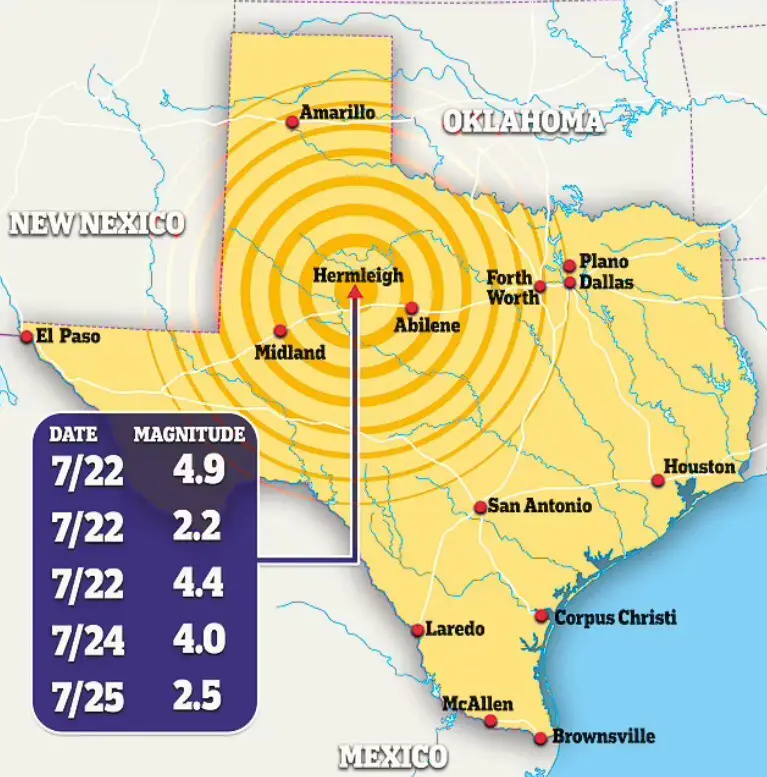Texas has experienced a series of five earthquakes within 48 hours, raising concerns about the potential link to hydraulic fracturing, commonly known as fracking. The most significant quake, with a magnitude of 4.9, struck Hermleigh, a town in northern Texas, earlier this week. This tremor, the eighth largest in the state’s history, was felt 200 miles away, affecting areas as far as Austin, southern Oklahoma, and New Mexico.
The sequence of quakes included a 4.4 magnitude aftershock and additional tremors ranging from 2.5 to 4.0 in magnitude. Scientists have pointed to the state’s extensive fracking activities as a likely cause. Justin Rubinstein, a geophysicist with the US Geological Survey (USGS), confidently linked these earthquakes to oil and gas extractions. Hydraulic fracturing involves injecting high-pressure water and chemicals into the earth to release natural gas, which can induce seismic activity by increasing pressure on fault lines.
Texas, the leading state in fracking, has seen a significant rise in the number of active oil and gas wells, from 279,615 in 2017 to 373,133 in 2023. The area near Hermleigh has experienced increased seismic activity since 2019, correlating with the intensification of fracking operations. Moira Plantier, a geology professor at Hardin-Simmons University, noted that human activities such as wastewater injection are likely contributing to the recent tremors.

The US Environmental Protection Agency (EPA) has acknowledged the connection between fracking and earthquakes since 1990. States like Colorado, Oklahoma, Ohio, and Arkansas have also reported similar issues. For instance, Oklahoma recorded an average of over 300 earthquakes annually since the fracking boom began in 2010, compared to just 21 per year from 1967 to 2000.
The Railroad Commission of Texas (RRC), which regulates the state’s oil and gas industry, has the authority to suspend or terminate permits for saltwater disposal if they contribute to seismic activity. In January, the RRC suspended 23 permits after determining that wastewater injection was causing fault lines to rupture. The commission has implemented a plan to halt wastewater injections for two years if an area experiences a 4.5 magnitude or higher earthquake. Additionally, the RRC is exploring alternative uses for wastewater to reduce the pressure on fault lines.
Dr. Peter Hennings, a research professor at Austin’s Bureau of Economic Geology, emphasized the importance of understanding fault line behaviors to better manage injection activities. By doing so, the risk of inducing earthquakes could be minimized, ensuring safer extraction practices in the future.




